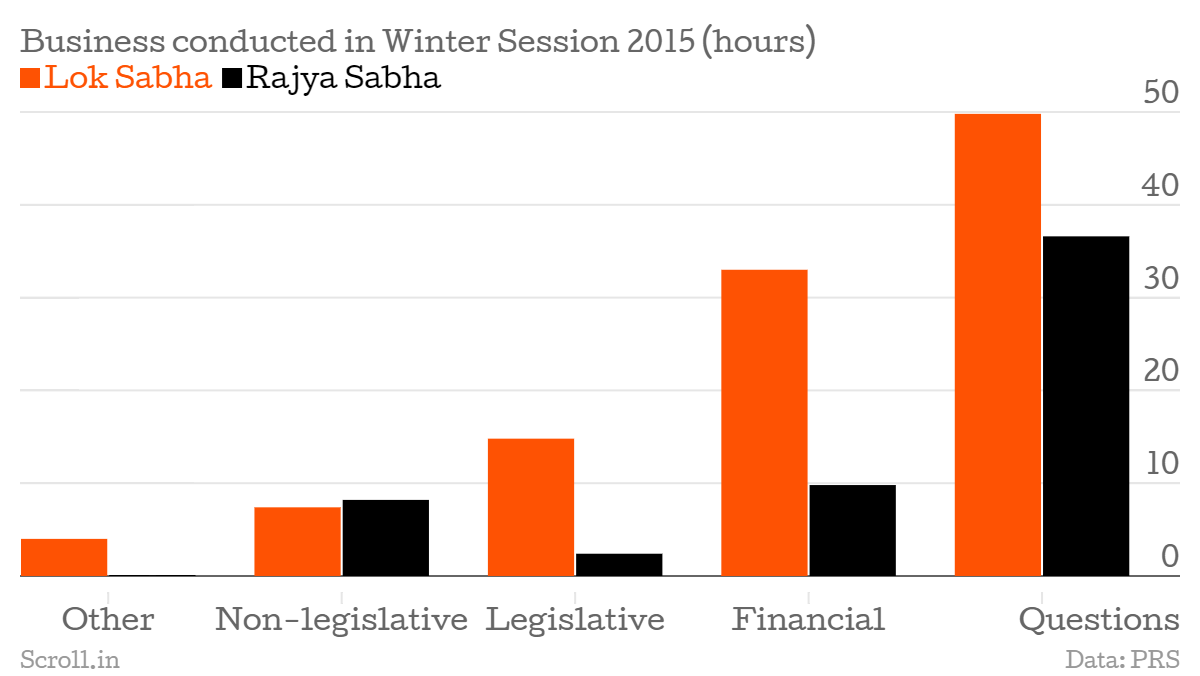Both houses of the Parliament were scheduled to function for a total of 226 hours in this session, which lasted from November 26 until December 23 and consider 19 bills, according to PRS legislative research, which tracks the work of Parliament.
During the session, the Lok Sabha passed 14 bills and registered 104% productivity by working overtime. But the Rajya Sabha was consistently adjourned due to protests by the opposition parties and functioned for only 50% of its scheduled time. Though the Upper House also ended up passing nine bills while the Goods and Services Tax Bill, which was on the top of the government’s agenda, is still languishing.

Contrary to perceptions, given how routine disruptions seemed to be, this wasn’t the worst Winter Session in the last four years. The session was a complete washout in 2013 when the Parliament could only function for about 10% of its scheduled time.
In this session, the Lok Sabha managed to functioned for more than double the hours of the Rajya Sabha, primarily because of the majority that the National Democratic Alliance enjoys in the lower house. The majority in the Lok Sabha allowed the government to bulldoze its way through important legislations even though the opposition staged walkouts routinely and protested regularly in the well of the house, sometimes with no idea whether the protests were about the GST bill or the National Herald case.

In the functioning hours, however, the Lok Sabha spent nearly 50 hours on non-legislative business like members asking and answering questions rather than on legislative business which only got 33 hours of work-time in the entire session. The figures for Rajya Sabha were even lower as it spent barely two hours on legislative business while it spent a meagre six minutes on financial business.

The question hour, meanwhile, saw a similar story – 71 questions were answered orally by members of the Lok Sabha while those in the Rajya Sabha answered 26 questions. The productivity percentage of Rajya Sabha during question hour was only 14% while Lok Sabha recorded a respectable productivity of 87%.










